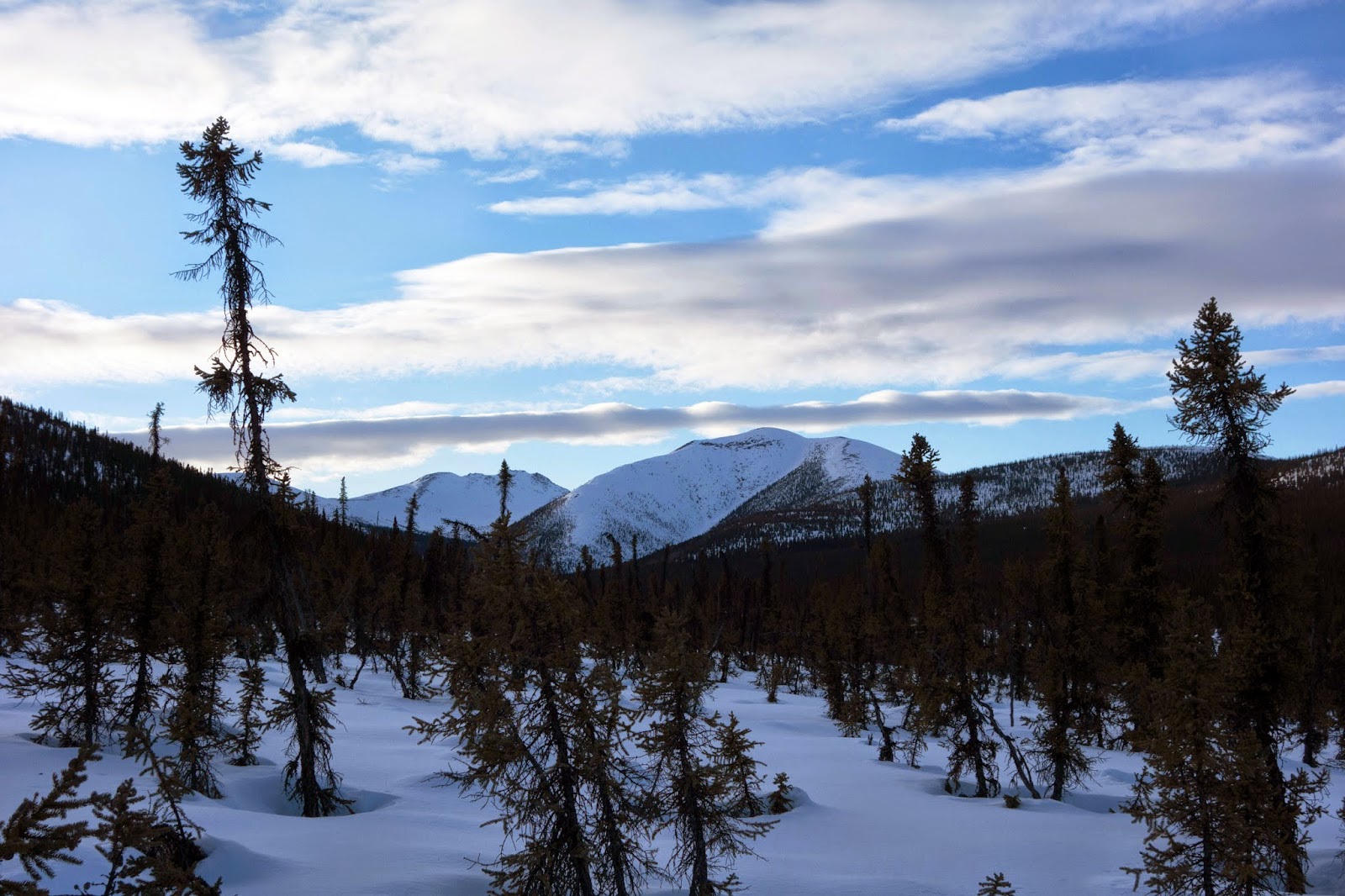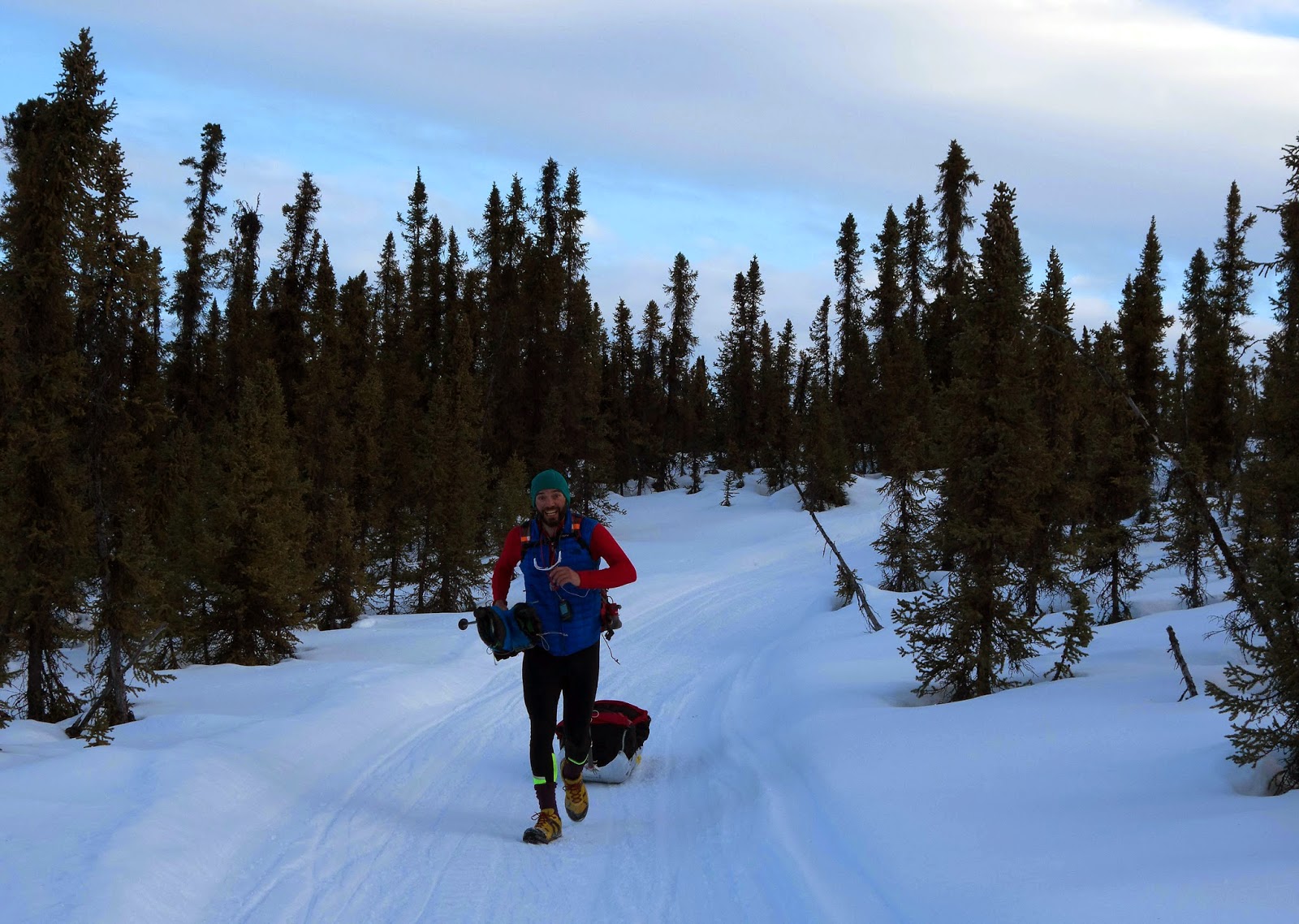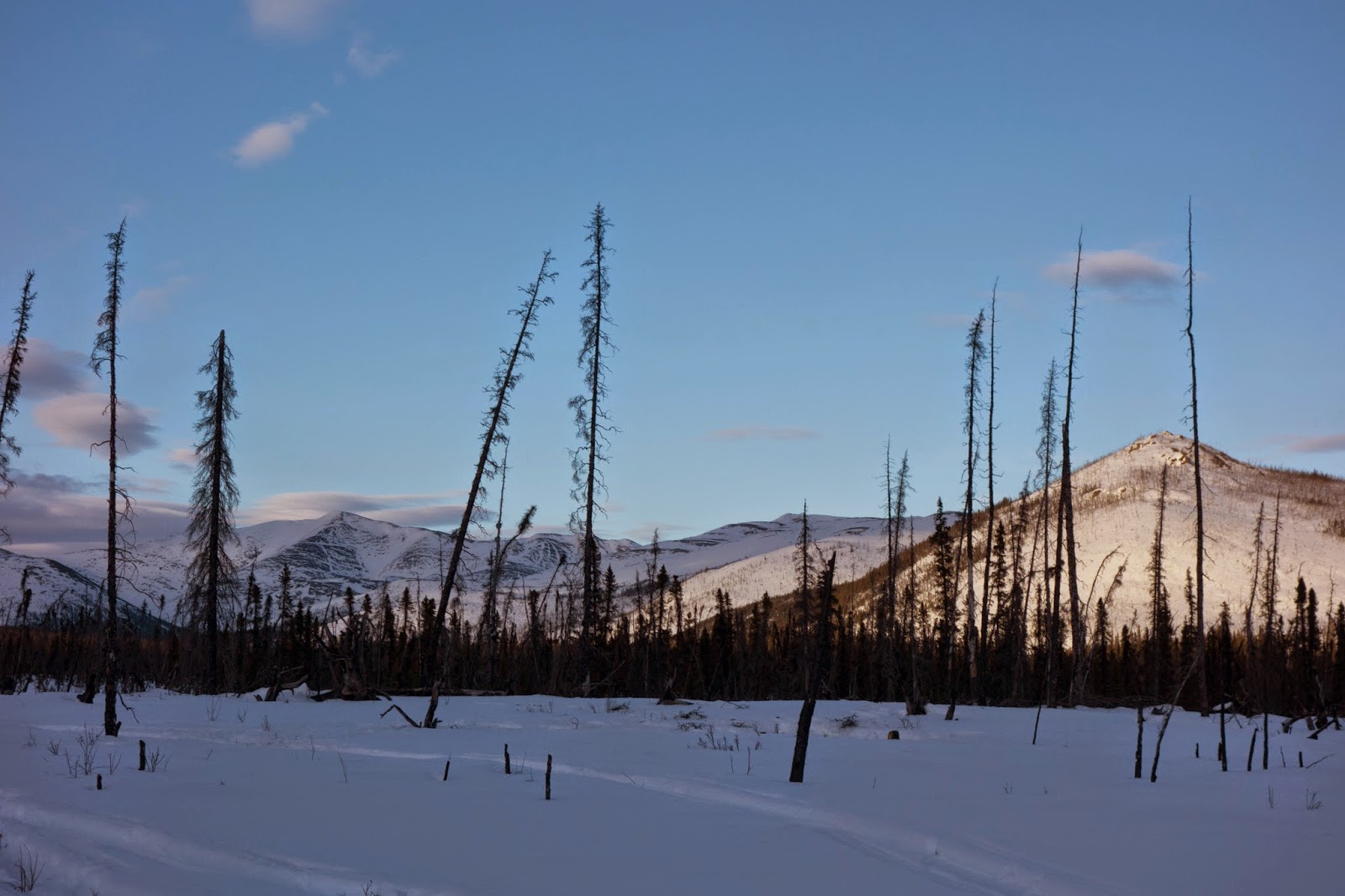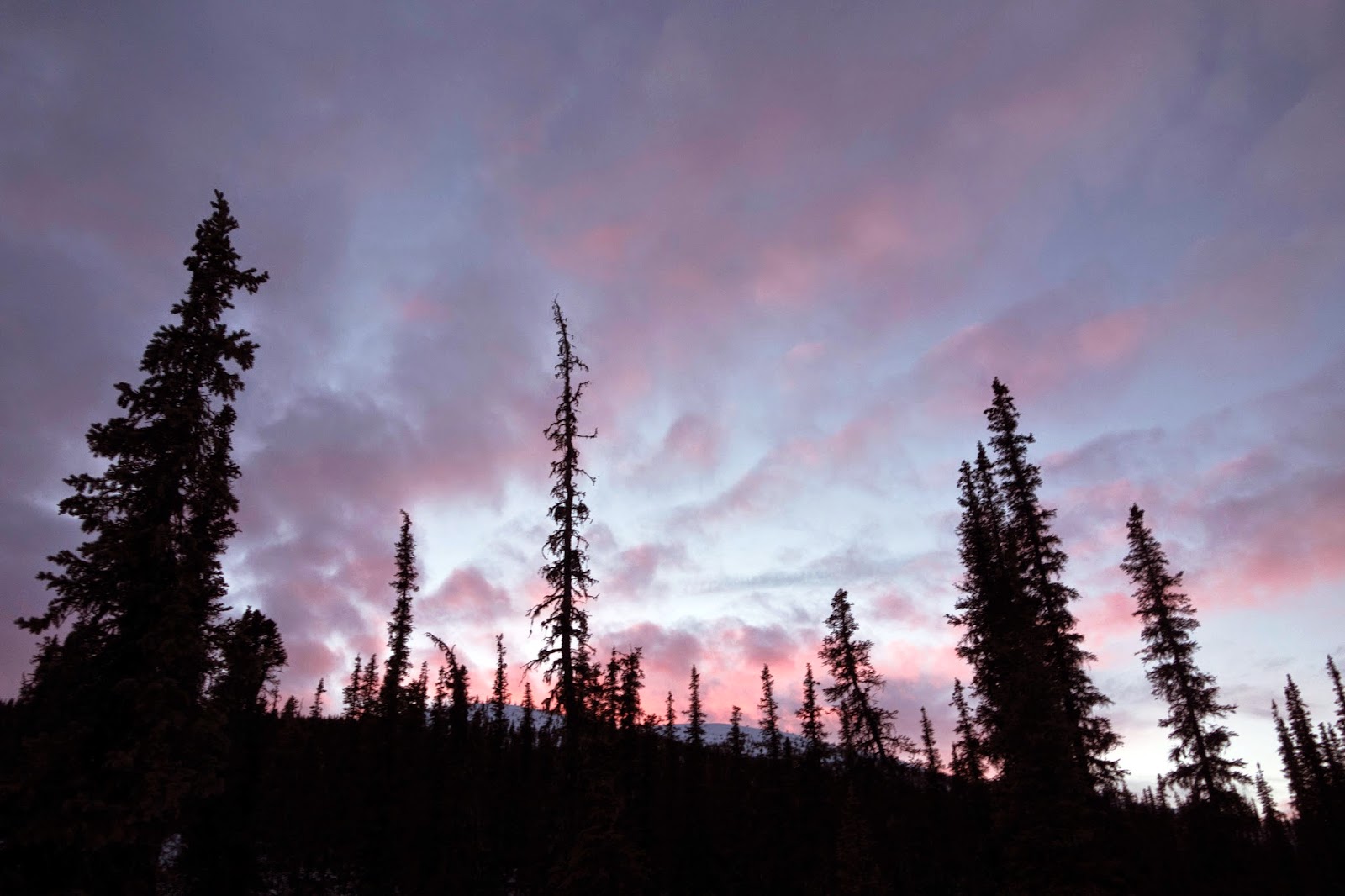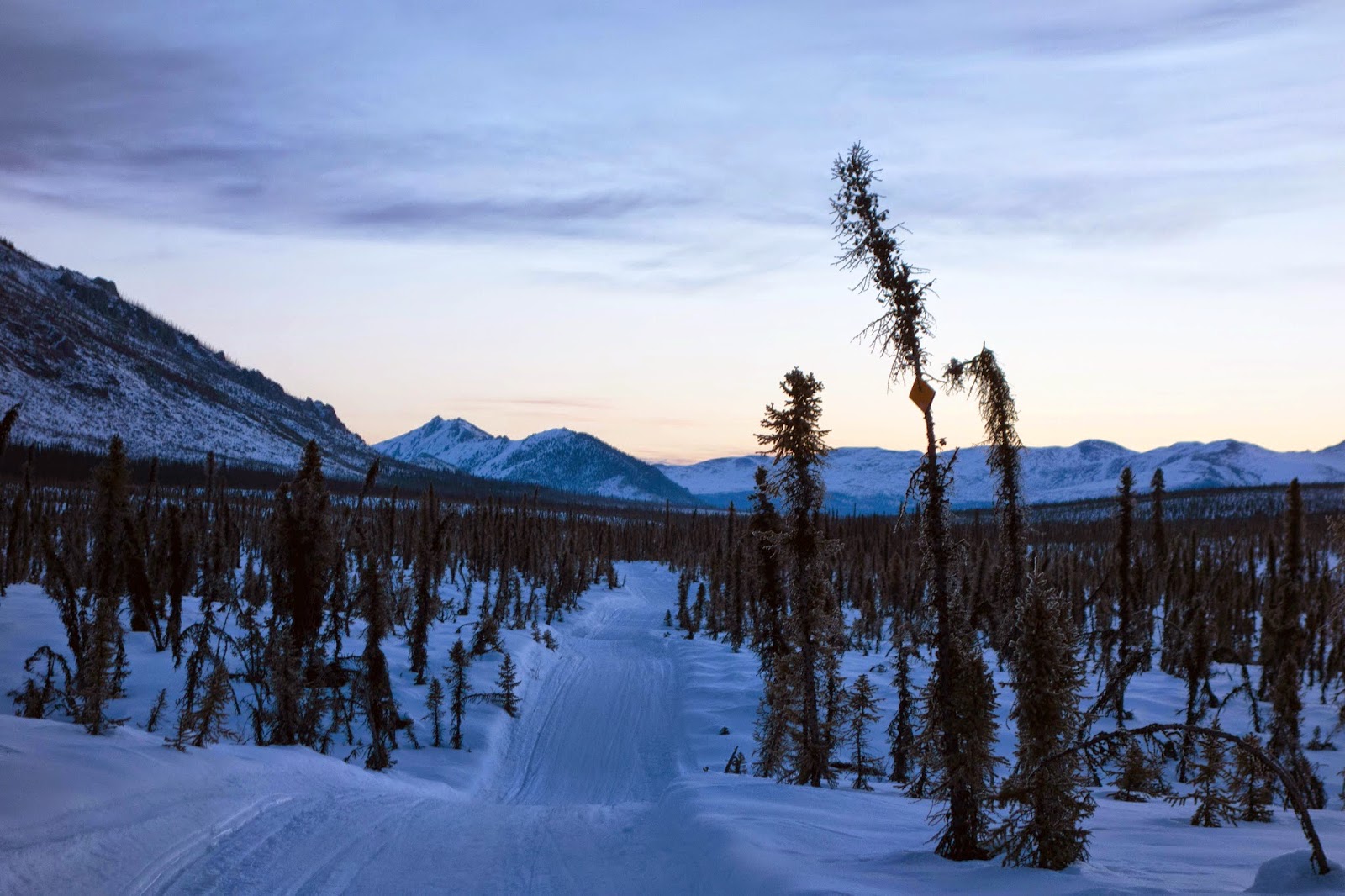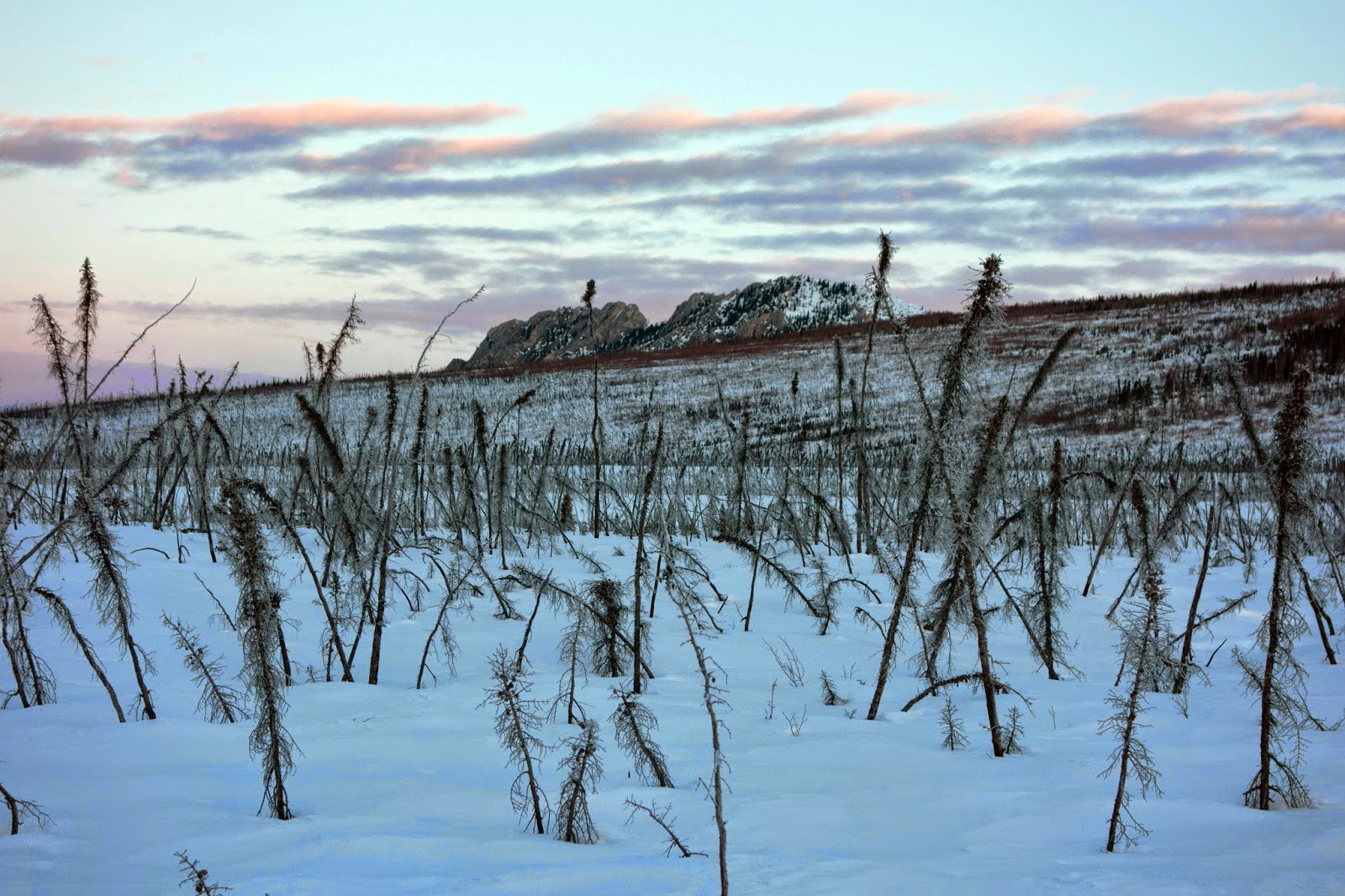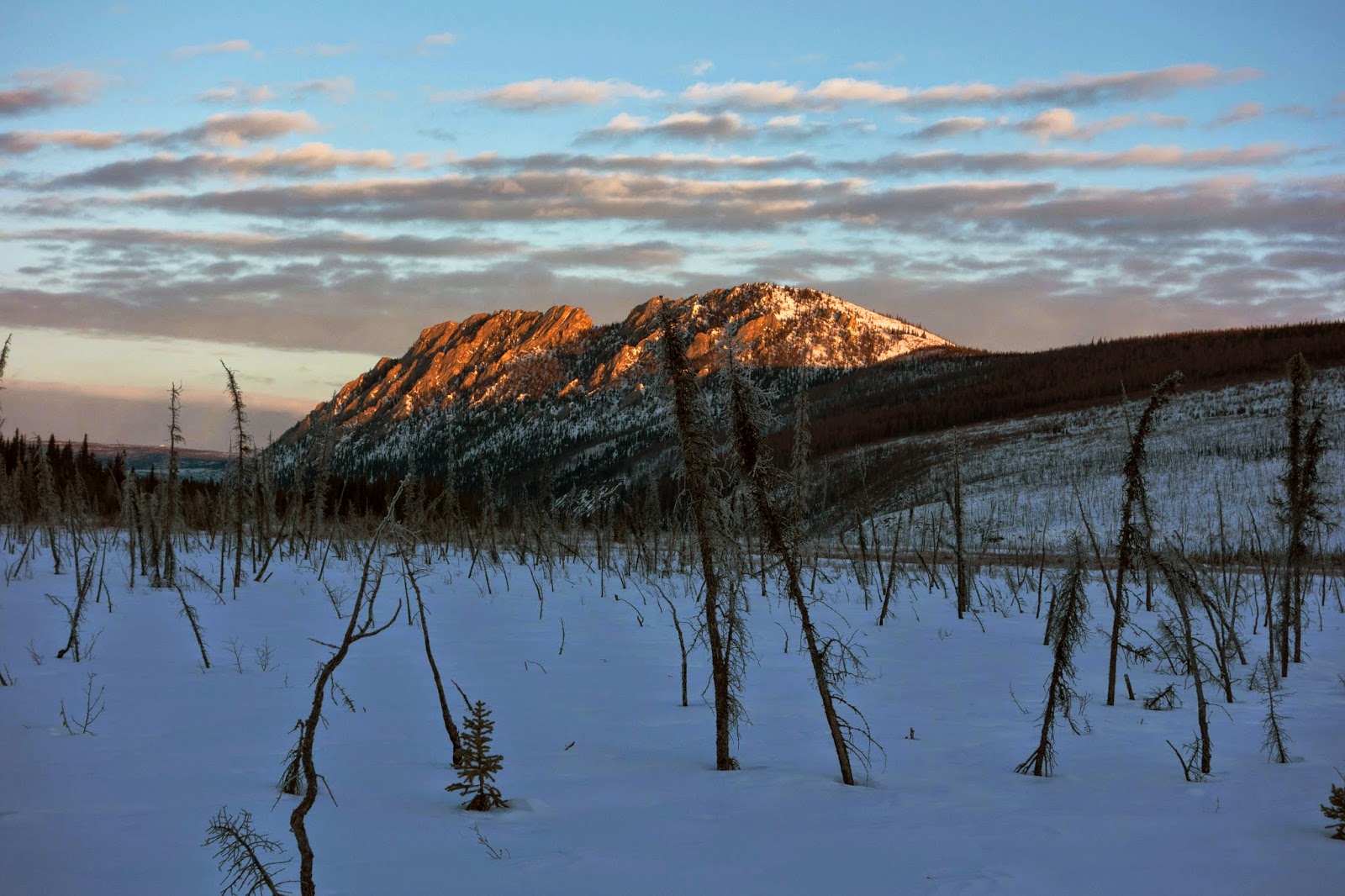Let's see, where was I? Oh yes, back in California. Beyond the usual flurry of tasks that every long trip away from home demands, both Beat and I had a rough re-entry to our routines. We were wrecked after the White Mountains 100, and then embarked on the worst recovery day possible. First, we drove for seven hours from Fairbanks to Anchorage, taking turns at the wheel while I worked on deadline on my laptop (yes, I am one of those people who becomes car sick when I don't watch the road. It was a delicate balance of tolerating nausea just to the point of vomiting, then looking up for a while.) In Anchorage, I finished up my work while our wonderful friends made us dinner. Then we packed up our three bulging duffles and enormous bike box, returned the rental truck, dragged the very large load across the airport, and boarded a red-eye flight with a long layover. By 7 a.m. in Seattle, I was as emotionally volatile as an overtired toddler, and nearly had a meltdown because my arms were hurting from having to carry my own stuff across the terminal. Also because sleep — so lacking. And walking — so hard.
Just 24 hours after we left Fairbanks, I curled up in my own bed and let the contentment wash over me like a warm shower. I was so happy to be home. And then, I wasn't as happy. It's always difficult to leave Alaska.
Springtime in California is beautiful, though. It's the best time of year here, even after such a dry winter. The hills are still green, there's an abundance of wildflowers, and temperatures are as nice as they come. After the initial post-100-mile rigor mortis wore off, my main physical issue has been tightness and cramping in my hamstrings. This persisted to an extent that I didn't get out much last week beyond some slow and short road rides. April 4 marked three years since I took my Moots mountain bike for his first spin, so I celebrated the Mootsiversary by joining Beat and Liehann on a ride up Black Mountain. My left hamstring cramped so badly that I had to lean into the pain, pedaling as though my left leg were a foot shorter than my right. I took a couple more recovery days after that.

Beat unpacked Snoots and swapped the overbuilt (actually, built to carry huge loads) titanium fork for a carbon Fatback fork. Now the bike with rear rack, stocked frame bag, and platform pedals weighs 32 pounds — not bad. We're already scheming plans for Alaska next year, which may include (gulp) traveling together by bike from Knik to Nome. After having my ass — along with every last ounce of self-confidence — handed to me by the winds in Shaktoolik, I was terribly reluctant to launch Iditarod plans for next year. But I've been scheming and working toward this trip for two years already, and dreaming about it for much longer (ten years, actually.) I know I'd regret it if I let one confidence-shaking journey derail these ambitions.
So, that's the hope for now: Bike to Nome in 2016, with or without Beat (he may still want to walk, which I fully support.) I'm not even convinced cycling is the best way to go for me on the Iditarod Trail. Dealing with a bike does dredge up an enormous amount of angst, caused by anticipating bad trail conditions, facing weather that is truly unworkable, and the constant threat of mechanicals. When traveling on foot — which has fewer variables— it's easier to just accept tough situations and keep pressing forward. But I also can't fathom the physical difficulties of dragging a sled for a thousand miles. Presuming I'm given a chance to try (because I want to make the trip to Nome with the support of the ITI, so need to wait and see whether my entry is accepted), I still have 10 months to think about it.

Other than Alaska dreams, what's next? Beat is gearing up to travel to South Africa in June, where he and Liehann will ride the Freedom Challenge (the same 2,500-kilometer mountain bike event that Liehann and I rode last year.) I didn't have a strong desire to go back and ride this particular event again, so I won't be joining them. I presumed I'd come up with some great bike tour for myself, but here I am, mid-April, and still haven't made any plans. I did toy with the possibility of another run at the Tour Divide, but my fitness isn't where I'd like it to be in that regard. And although it would be great training for Nome, I'm not sure I'm excited enough about such a difficult endeavor at this time. I only want to ride the Great Divide Mountain Bike Route again if I'm going to go all out — to the limits of my physical abilities — and explore all the edges of my inner galaxy while viewing beautiful scenery outside. I don't have a strong desire to fast-tour this particular route, which may be all I'm up for right now. So, June plans also are in flux. I may ultimately just decide to nail down my Ann Trason book project, visit friends and family, and train for UTMB in a more focused way with lots of hiking and trail running. Or ... bike tour. Or both!
I'll never complain about too many good options. I met with Ann this week to discuss recent talks with a publisher, and went for a beautiful trail run at Tilden Park in Berkeley. Even with tight hamstrings and being worked over by the White Mountains 100, my post-Alaska trail runs have all gone quite well. I'm stoked on my current running fitness, especially after the WM100 proved I have a decent base to spend the summer building.
Still, bikepacking dreams don't give up easily. A friend's memorial service next week will take precedence over the Tour de Las Padres, a 300-mile bikepacking race near Santa Barbara that I'd been tentatively planning to ride as a sort of summer shakedown. In terms of heat acclimation and recovery from Alaska adventures, this coming weekend feels too soon anyway, so it wasn't too disappointing to let this go. Still, it seemed worth getting in a good effort this weekend to see where I'm at. On Saturday I joined my friend Jan for a 105-mile mountainous loop between Pleasanton and Mount Hamilton.
After a month of riding a heavily loaded Snoots on soft snow, sometimes pedaling (actually sitting in the saddle and pedaling) slower than two miles an hour, riding my road bike feels effortless. I love how it zips up hills and actually coasts sometimes. I was beginning to think this bike pedaled itself, but when put to the test by 100+ miles of the Diablo Range with frequent 12-percent grades and 8,500 feet of climbing, this theory failed. This was a tough century, as Jan will agree. He often lamented how slow we were moving for our efforts. ("But our average speed is in the double digits," I'd marvel.) We fought gusty winds and mean climbs toward the 4,200-foot peak, followed by a stiff headwind all the way back to Pleasanton along the steep rollers of Calaveras Road. I was tired but still couldn't believe how fast and relaxing it all felt. That's the benefit I still carry from my 120-mile, five-day ride in Alaska: Try something ridiculously hard, and for a short time — while the memories are fresh — everything else will seem easy.
Despite the tired century legs, I joined Liehann and Beat on Sunday for their Freedom Challenge training ride. Beat loaded up his Lenz with bags and gear, and they conducted bike-carry training at Fremont Older.
After swooping around Fremont Older's small but high-quality singletrack selection, we guided Beat on his first ride up Bohlman On-Orbit. Bohlman is a local road climb that I often use on a comparative difficulty scale to gauge snow-biking efforts (as in, "man, that trail was soft. It was like climbing Bolhman On-Orbit for six hours.) I'm not sure whether this climb gave Beat and appreciation for how *really hard* pedaling < 2 mph on snow can be, but I think it gave him an appreciation for climbing Bohlman On-Orbit. It's steep and relentless, gaining 2,500 feet with no breaks. We sweated buckets to the top of the ridge, descended the El Sereno fire road into Los Gatos, then tied up the loop with another climb up the steep trails of Fremont Older. Altogether the ride was 37 miles with 5,200 feet of climbing. I felt some muscle fatigue in my legs, but otherwise had no issues from the long ride the previous day. I rode as well as I would have on fresh legs. It's a good indicator of endurance ... but where to take it? I just don't know.
Just 24 hours after we left Fairbanks, I curled up in my own bed and let the contentment wash over me like a warm shower. I was so happy to be home. And then, I wasn't as happy. It's always difficult to leave Alaska.

Beat unpacked Snoots and swapped the overbuilt (actually, built to carry huge loads) titanium fork for a carbon Fatback fork. Now the bike with rear rack, stocked frame bag, and platform pedals weighs 32 pounds — not bad. We're already scheming plans for Alaska next year, which may include (gulp) traveling together by bike from Knik to Nome. After having my ass — along with every last ounce of self-confidence — handed to me by the winds in Shaktoolik, I was terribly reluctant to launch Iditarod plans for next year. But I've been scheming and working toward this trip for two years already, and dreaming about it for much longer (ten years, actually.) I know I'd regret it if I let one confidence-shaking journey derail these ambitions.
So, that's the hope for now: Bike to Nome in 2016, with or without Beat (he may still want to walk, which I fully support.) I'm not even convinced cycling is the best way to go for me on the Iditarod Trail. Dealing with a bike does dredge up an enormous amount of angst, caused by anticipating bad trail conditions, facing weather that is truly unworkable, and the constant threat of mechanicals. When traveling on foot — which has fewer variables— it's easier to just accept tough situations and keep pressing forward. But I also can't fathom the physical difficulties of dragging a sled for a thousand miles. Presuming I'm given a chance to try (because I want to make the trip to Nome with the support of the ITI, so need to wait and see whether my entry is accepted), I still have 10 months to think about it.

Other than Alaska dreams, what's next? Beat is gearing up to travel to South Africa in June, where he and Liehann will ride the Freedom Challenge (the same 2,500-kilometer mountain bike event that Liehann and I rode last year.) I didn't have a strong desire to go back and ride this particular event again, so I won't be joining them. I presumed I'd come up with some great bike tour for myself, but here I am, mid-April, and still haven't made any plans. I did toy with the possibility of another run at the Tour Divide, but my fitness isn't where I'd like it to be in that regard. And although it would be great training for Nome, I'm not sure I'm excited enough about such a difficult endeavor at this time. I only want to ride the Great Divide Mountain Bike Route again if I'm going to go all out — to the limits of my physical abilities — and explore all the edges of my inner galaxy while viewing beautiful scenery outside. I don't have a strong desire to fast-tour this particular route, which may be all I'm up for right now. So, June plans also are in flux. I may ultimately just decide to nail down my Ann Trason book project, visit friends and family, and train for UTMB in a more focused way with lots of hiking and trail running. Or ... bike tour. Or both!
I'll never complain about too many good options. I met with Ann this week to discuss recent talks with a publisher, and went for a beautiful trail run at Tilden Park in Berkeley. Even with tight hamstrings and being worked over by the White Mountains 100, my post-Alaska trail runs have all gone quite well. I'm stoked on my current running fitness, especially after the WM100 proved I have a decent base to spend the summer building.
 |
| I know, so many selfies. This was the only photo from this day that survived a serious case of sweaty lens smudges. |
After a month of riding a heavily loaded Snoots on soft snow, sometimes pedaling (actually sitting in the saddle and pedaling) slower than two miles an hour, riding my road bike feels effortless. I love how it zips up hills and actually coasts sometimes. I was beginning to think this bike pedaled itself, but when put to the test by 100+ miles of the Diablo Range with frequent 12-percent grades and 8,500 feet of climbing, this theory failed. This was a tough century, as Jan will agree. He often lamented how slow we were moving for our efforts. ("But our average speed is in the double digits," I'd marvel.) We fought gusty winds and mean climbs toward the 4,200-foot peak, followed by a stiff headwind all the way back to Pleasanton along the steep rollers of Calaveras Road. I was tired but still couldn't believe how fast and relaxing it all felt. That's the benefit I still carry from my 120-mile, five-day ride in Alaska: Try something ridiculously hard, and for a short time — while the memories are fresh — everything else will seem easy.












